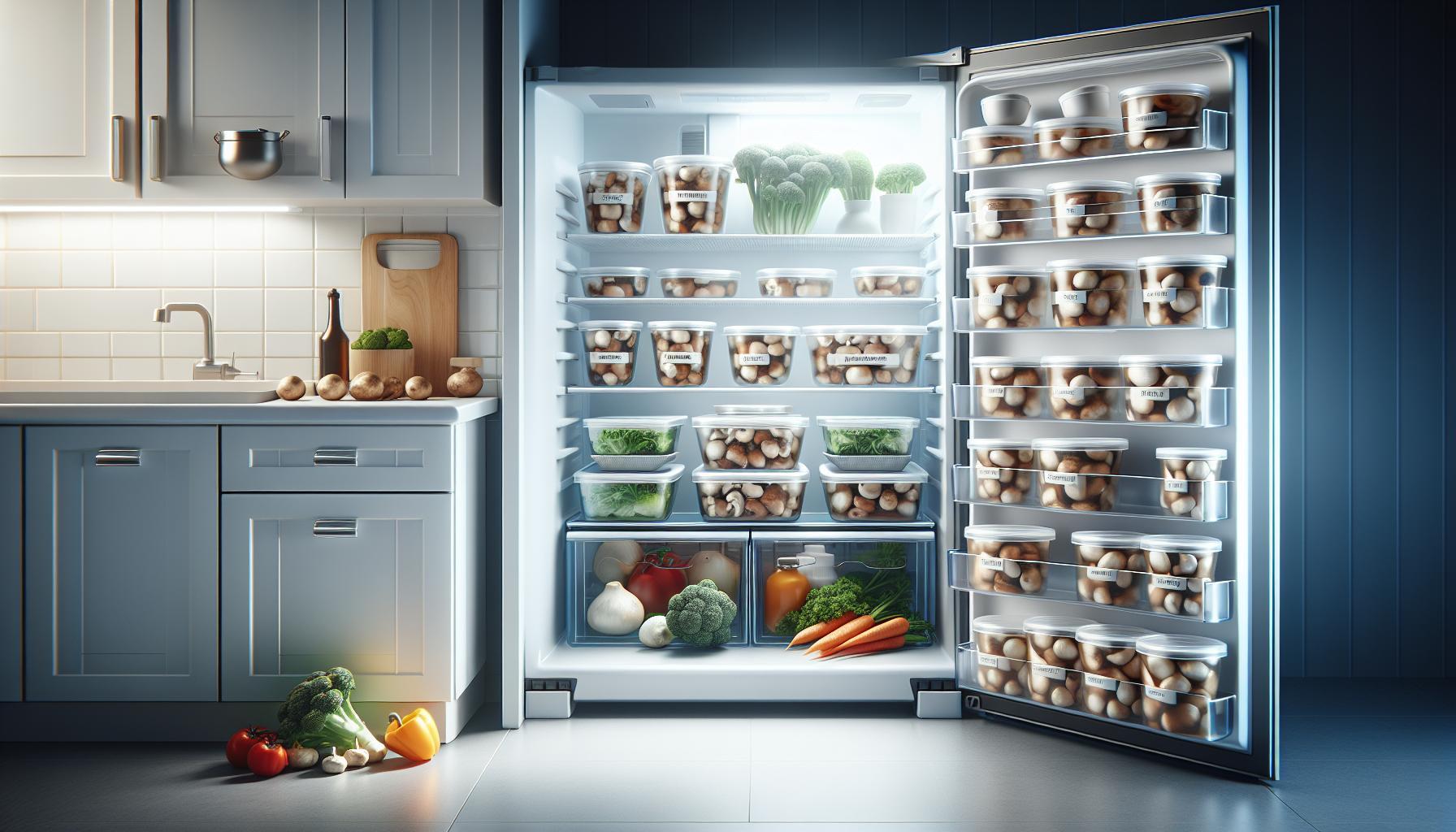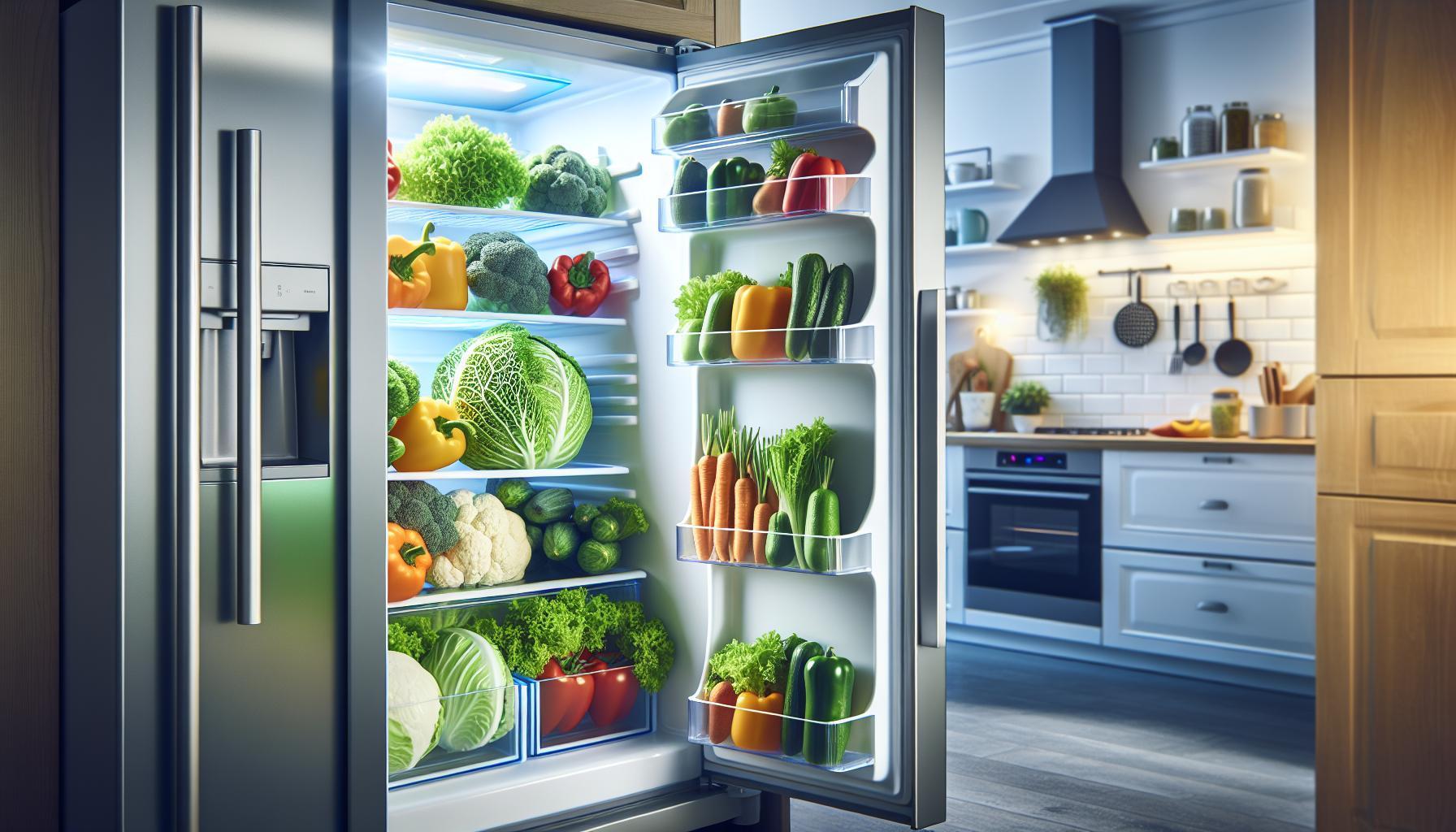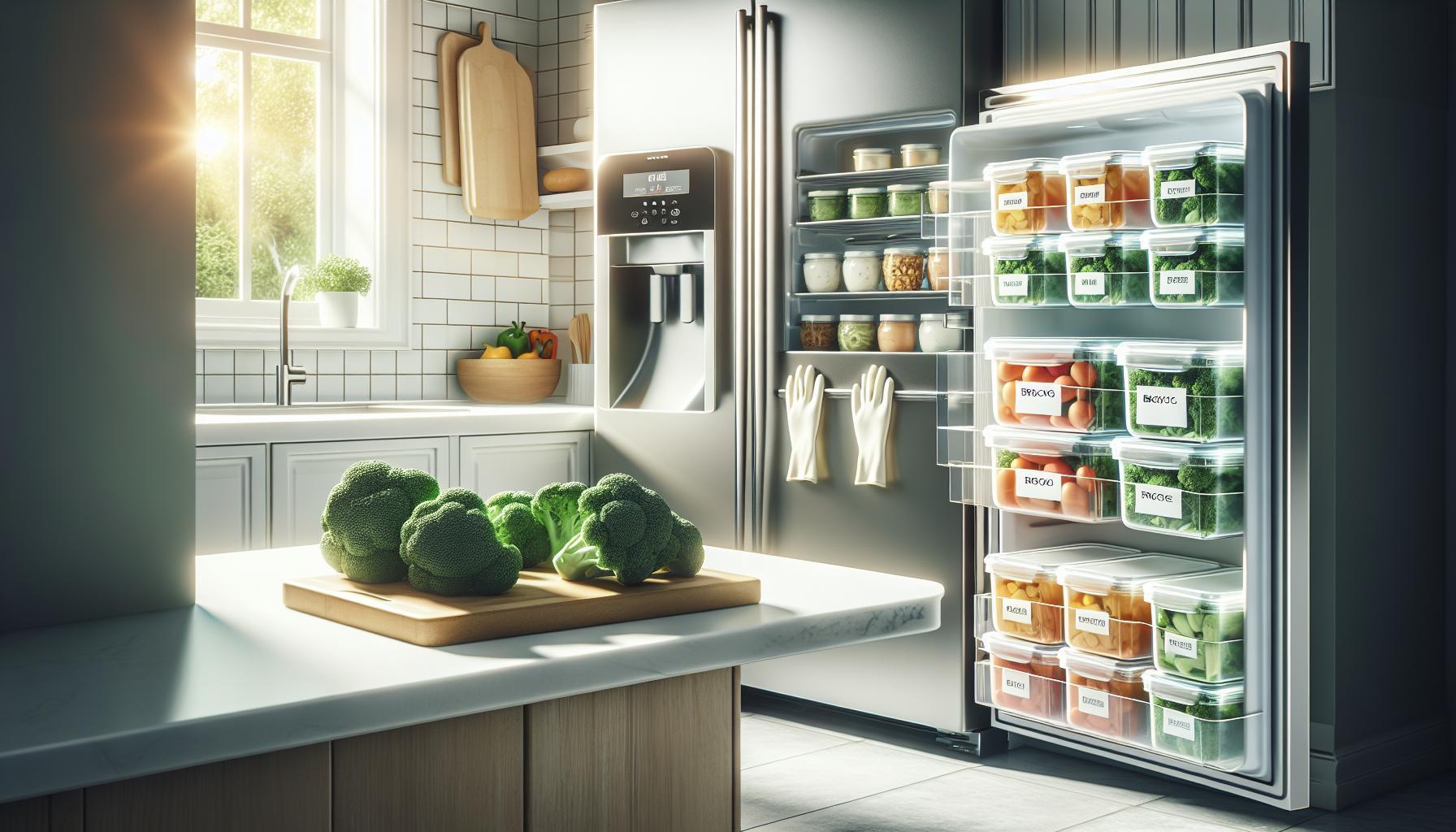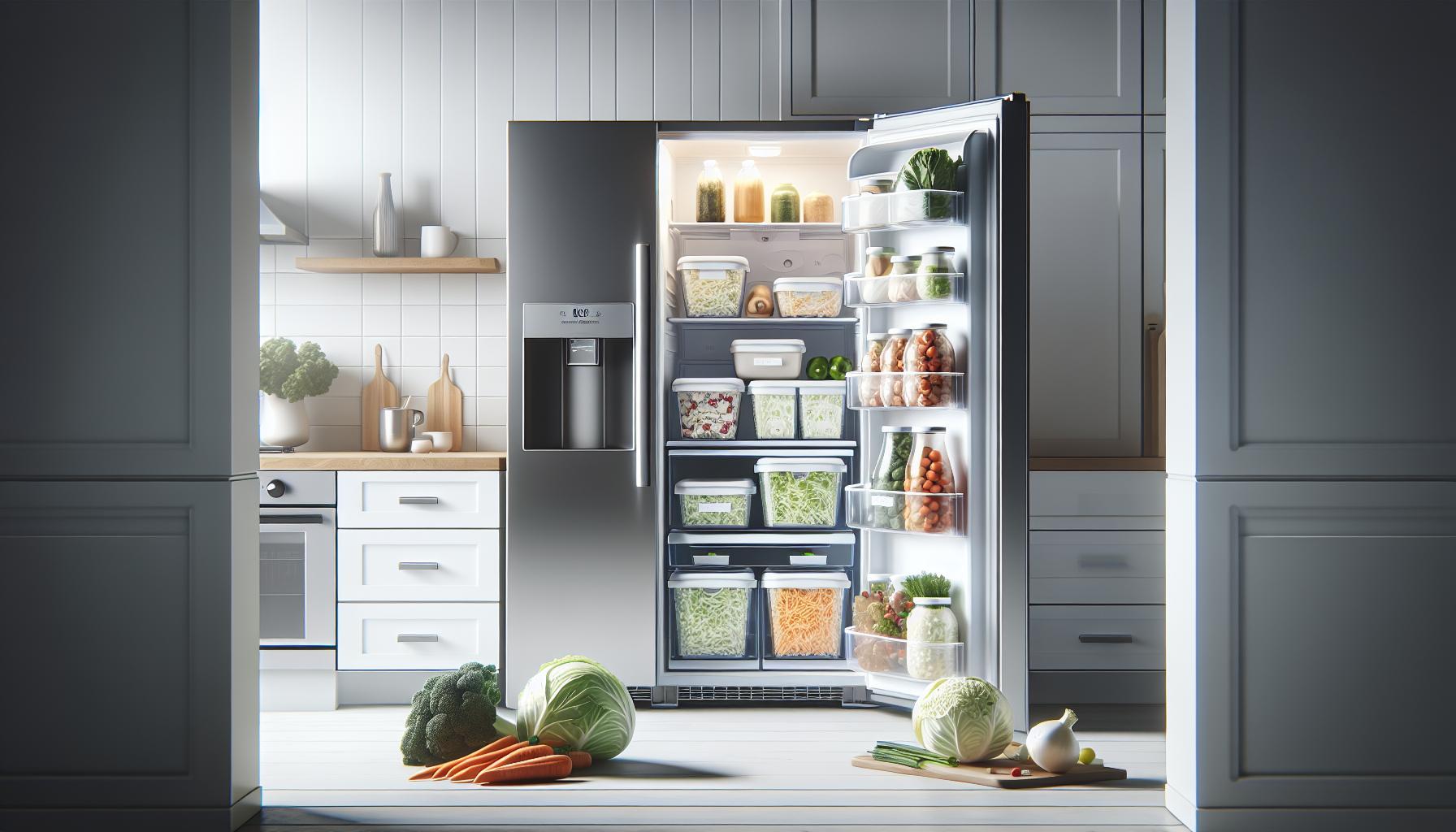Cooked mushrooms are a delicious addition to many meals, but how long can you safely keep them in the fridge? Knowing the lifespan of your cooked mushrooms not only prevents food waste but also ensures your meals maintain both flavor and safety. With their unique texture and rich umami taste, mushrooms can elevate a simple dish, yet improper storage can lead to spoilage.
Many home cooks find themselves wondering if their leftovers are still good to eat or if they’re better off discarded. This guide will provide you with essential information on how to store cooked mushrooms properly, safety guidelines, and timeframes for refrigeration. Understanding the proper storage methods will allow you to enjoy these flavorful fungi longer, minimizing waste and maximizing taste. Dive in to discover the secrets to preserving your cooked mushrooms and keeping your meals both delicious and safe!
How Long Can You Store Cooked Mushrooms?
Cooked mushrooms can add a burst of umami flavor to meals, but knowing how long they remain safe and delicious is essential for enjoying them at their best. When stored properly in the refrigerator, cooked mushrooms can typically last for about 3 to 5 days. After this period, the risk of spoilage increases, which can compromise both flavor and food safety. It’s crucial to consider the storage conditions and the type of mushrooms used, as some varieties may have slightly different shelf lives.
To maximize the freshness of your cooked mushrooms, ensure they are stored in an airtight container. This helps to prevent moisture loss and minimize exposure to air, both of which can hasten spoilage. Additionally, placing the container in the coldest part of your fridge can further extend their lifespan. If you’re unsure about the state of your mushrooms after a few days, always rely on your senses-if they emit an off smell, show signs of mold, or have an unusual texture, it’s best to err on the side of caution and discard them.
In contrast, if you have made a large batch or simply want to preserve their quality for a longer period, freezing is an excellent option. Frozen cooked mushrooms can maintain their quality for up to 10 to 12 months, though for the best flavor, consuming them within 6 months is recommended. Just be sure to let them cool completely before freezing and use a freezer-safe container, ensuring they are well-sealed to prevent freezer burn.
By following these storage guidelines, you can enjoy your cooked mushrooms safely while enhancing your culinary creations with their rich flavor, whether within a week of cooking or months later when frozen.
Optimal Storage Techniques for Cooked Mushrooms
To keep your cooked mushrooms tasting great and safe to eat, it’s essential to follow effective storage techniques. Proper storage not only ensures that you enjoy them within the optimal timeframe but also helps maintain their flavors and textures. One of the most important aspects of mushroom storage is utilizing airtight containers. These containers limit exposure to air and moisture, both of which can accelerate spoilage. After cooking, allow your mushrooms to cool to room temperature before transferring them to a container, as placing hot mushrooms directly into the fridge can create condensation and promote bacterial growth.
When it comes to refrigeration, placing the airtight container in the coldest part of your refrigerator is advisable. This typically will be at the back of the fridge, rather than the door, which is subject to more temperature fluctuations. Remember to consume cooked mushrooms within 3 to 5 days for the best quality, as beyond this, the risk of spoilage significantly increases. Keep an eye out for subtle changes in smell or texture, which can be indicators that they have gone bad.
For those looking to extend the life of their cooked mushrooms even further, freezing is a highly effective option. Before freezing, ensure the mushrooms are cooled thoroughly and packed in a freezer-safe container or heavy-duty freezer bags. Removing as much air as possible from these bags will help prevent freezer burn, allowing you to enjoy your mushrooms for up to 10 to 12 months. It’s best, however, to eat them within 6 months for optimal flavor. When it’s time to use them, thaw safely in the refrigerator and heat them through for best results in taste and texture.
In summary, utilizing airtight containers and understanding the appropriate storage locations and methods can significantly enhance the longevity and quality of your cooked mushrooms. Adopting these practices helps you savor their rich umami flavor long after they’ve been cooked.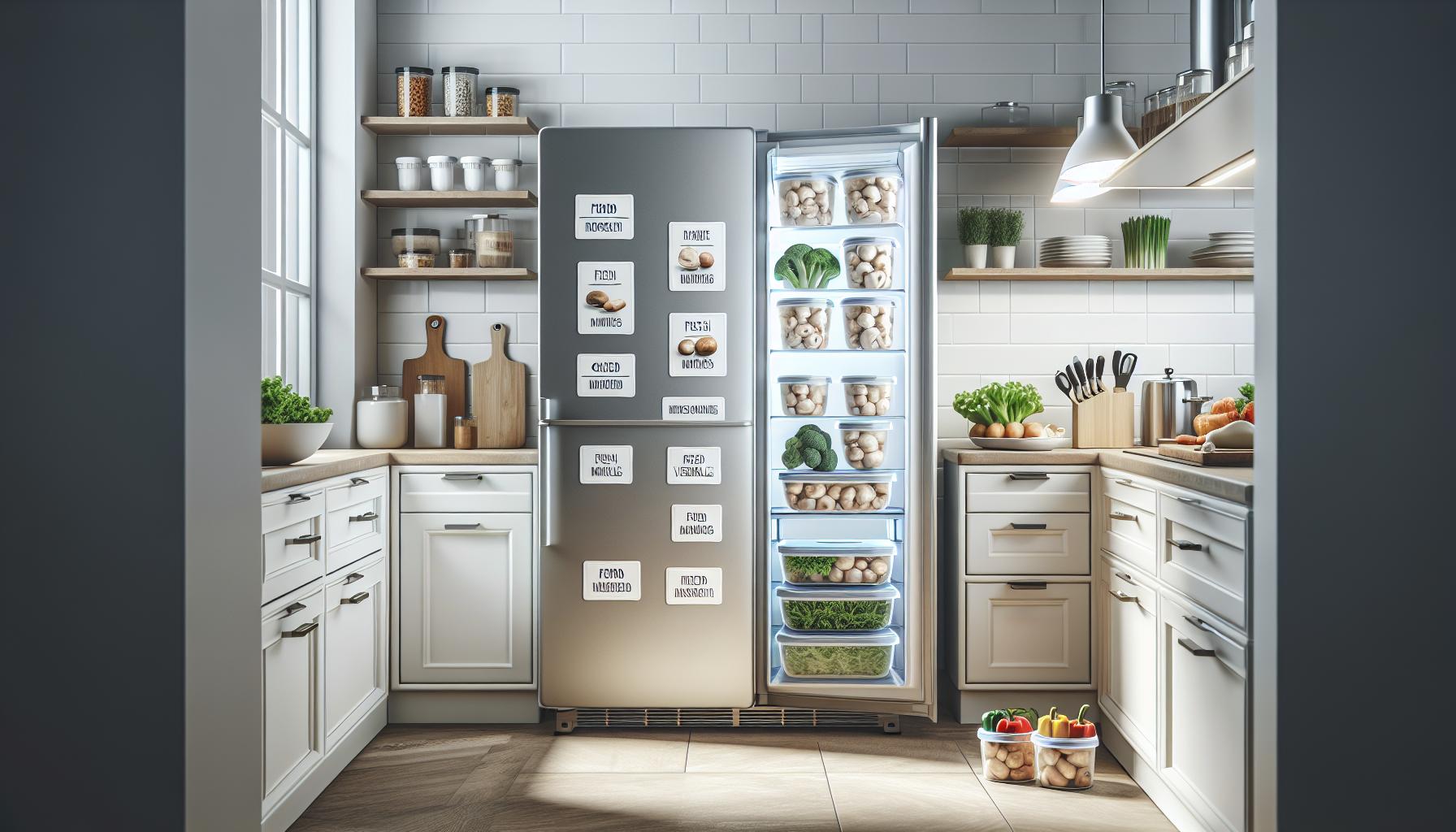
Signs Your Cooked Mushrooms Have Gone Bad
Cooking with mushrooms adds unique flavors and nutrition to your meals, but how do you know if those cooked mushrooms are still safe to eat? Recognizing the signs of spoilage is crucial for food safety and keeping your dishes delicious. Cooked mushrooms have a relatively short shelf life, and knowing what to look for can prevent unpleasant surprises and potential foodborne illnesses.
The first indicator is a change in smell. Freshly cooked mushrooms have a pleasant, earthy aroma. If you notice a sour, rancid, or off-putting smell, it’s time to discard them. Additionally, pay attention to their texture. Fresh mushrooms should feel firm and tender but not slimy or sticky. If the mushrooms become excessively moist or exhibit a strange, slippery surface, this is a sign of spoilage. Mold growth is another clear red flag. If you see any dark spots, fuzzy patches, or visible mold, don’t hesitate to throw them away.
In addition to smell and texture, consider the color of your cooked mushrooms. Slight discoloration can occur as they age, but significant changes, such as becoming overly dark or developing a gray hue, indicate they are no longer fresh. Lastly, keep an eye on their overall appearance. If cooked mushrooms have been stored inappropriately or for too long, they might start to dry out or develop an unappealing look, which can further affect their taste and safety.
In summary, always trust your senses when assessing cooked mushrooms. Noticing changes in smell, texture, color, and overall appearance can help ensure that you only eat what is safe and enjoyable. To play it safe, remember the guideline of 3 to 5 days for storing cooked mushrooms in the fridge and act promptly to prevent waste and health risks.
Reheating Cooked Mushrooms Safely
When it comes to enjoying leftover cooked mushrooms, safety and flavor preservation are key. Reheating them properly not only helps maintain their taste and texture but also ensures that any potential foodborne bacteria are eliminated. Ideally, cooked mushrooms should be consumed within 3 to 5 days when stored properly in the refrigerator, so it’s essential to know how to reheat them while maintaining their quality.
To reheat cooked mushrooms safely, the best approach is to use a method that allows for even heating. This can be done on the stovetop, in the oven, or even in the microwave, depending on your preference. If using a stovetop, place the mushrooms in a skillet over medium heat, adding a small amount of oil or butter to prevent sticking and enhance flavor. Stir frequently until heated through, usually taking about 5-7 minutes.
In the oven, you can spread the mushrooms on a baking sheet and warm them at around 350°F (175°C) for about 10-15 minutes. For microwave reheating, use a microwave-safe dish, cover it loosely to retain moisture, and heat in short intervals of 30 seconds, stirring in between, until warmed through. Regardless of the method, ensure that the mushrooms reach an internal temperature of 165°F (74°C) to effectively kill any harmful bacteria.
Choosing the right method also impacts the flavor and texture of the mushrooms. To preserve their unique taste, avoid reheating in a way that causes them to become soggy or overly dried out. If you notice any off smells, unusual textures, or mold, discard the mushrooms immediately, as these are clear signs of spoilage. By following these reheating tips, you can safely enjoy your cooked mushrooms while maximizing their delicious, earthy flavors.
Freezing Cooked Mushrooms: A Complete Guide
Freezing cooked mushrooms is an excellent way to extend their shelf life while preserving their unique flavor and nutritional value. When stored correctly, frozen cooked mushrooms can maintain their quality for up to 10 to 12 months, making them a convenient option for future meals. To ensure optimal taste and texture upon thawing, it’s essential to follow a few key steps.
Before freezing, allow the cooked mushrooms to cool completely. This prevents condensation in the storage container, which can lead to ice crystals forming and negatively affecting texture. Once cool, portion the mushrooms into small, airtight containers or freezer bags, leaving some space for expansion as they freeze. For added protection against freezer burn, consider wrapping the bags in aluminum foil or plastic wrap. Always label the containers with the date for easy tracking.
When you’re ready to enjoy your frozen mushrooms, it’s best to thaw them in the refrigerator overnight for even defrosting. For quicker options, you can also defrost them in the microwave, using the low heat setting. After thawing, it’s advisable to reheat them thoroughly before adding to dishes or consuming alone, ensuring they reach an internal temperature of 165°F (74°C) to ensure food safety.
Incorporating frozen mushrooms into your cooking is versatile. You can toss them into soups, casseroles, omelets, or stir-fry, enriching your dishes without the hassle of prep time. However, it’s worth noting that the texture may change after freezing and thawing, making them potentially less suitable for raw preparations or dishes where a firm texture is desired. With these techniques, you can enjoy the delightful taste of mushrooms year-round while minimizing waste.
Flavor Preservation Tips for Cooked Mushrooms
When it comes to preserving the delightful flavor of cooked mushrooms, a few thoughtful techniques can make a significant difference. Cooked mushrooms are not only a culinary delight but also a versatile ingredient that can enhance many dishes. To keep their rich umami flavor intact, proper storage and preparation practices are crucial.
First and foremost, storing cooked mushrooms in an airtight container is essential. This minimizes air exposure, which can lead to oxidation and loss of flavor. Ideally, they should be refrigerated and consumed within three to five days for optimal freshness. To further enhance their longevity without sacrificing taste, consider adding a few drops of olive oil or a sprinkle of salt before storage. Olive oil aids in retaining moisture, while salt can act as a natural preservative.
Reheating with Care
When it’s time to enjoy your mushrooms again, reheating them correctly plays a pivotal role in flavor retention. Avoid the microwave if possible, as it can make the mushrooms rubbery. Instead, opt for sautéing them gently on the stovetop with a drizzle of oil, which not only warms them through but also revives their flavor profile. Aim for a medium heat, stirring frequently to avoid burning.
Incorporating fresh ingredients during reheating can also uplift their taste. Adding garlic, herbs like parsley or thyme, or a splash of soy sauce can reinvigorate the flavors of previously cooked mushrooms, making them a delicious enhancement to your meal. By following these storage and reheating tips, you can savor the rich, earthy flavors of your cooked mushrooms well beyond their initial preparation.
Creative Uses for Leftover Cooked Mushrooms
Leftover cooked mushrooms are a treasure waiting to be creatively utilized in your kitchen, extending their deliciousness beyond the initial meal. With proper refrigeration, these flavorful fungi can last three to five days, but to keep the magic alive, consider incorporating them into various dishes that enhance their taste and provide new culinary experiences.
One of the simplest yet most satisfying ways to repurpose cooked mushrooms is to toss them into a savory omelet or frittata. Their earthy flavors pair beautifully with eggs, while the leftover mushrooms add a delightful texture. You can also blend them into creamy pasta sauces, providing depth and umami without overpowering the dish. For a quick and nutritious option, sauté the mushrooms with spinach and garlic as a perfect filling for wraps or sandwiches, giving your lunch a gourmet twist.
Another innovative approach is to use cooked mushrooms as a base for soups or stews. Simply chop them and add them to a simmering broth, letting their flavor infuse the soup while enhancing its heartiness. Leftover mushrooms can also shine in grain bowls, where they can be combined with quinoa, brown rice, or farro, along with fresh vegetables and a drizzle of dressing for a wholesome meal.
For those looking for unique appetizer ideas, consider blending the leftovers into a pâté or spread by pureeing them with cream cheese, herbs, and spices. This creates an elegant hors d’oeuvre that pairs wonderfully with crackers or fresh bread. If you’re feeling adventurous, try incorporating them into homemade pizza or flatbreads, where they can blend with cheese and other toppings to create a rich and satisfying dish that is sure to impress.
By thinking outside the box, you can transform leftover cooked mushrooms into enticing new meals, ensuring that nothing goes to waste while savoring their delightful flavors.
Storing Cooked Mushrooms: Containers Matter
When it comes to prolonging the life and flavor of cooked mushrooms, the containers you choose can make a significant difference. Using the right type of storage can help maintain the texture and taste of these savory fungi while preventing spoilage. For optimal results, avoid using containers that may trap moisture, as excess humidity can lead to mushy or slimy mushrooms.
Choosing the Right Containers
To start, the best storage option for cooked mushrooms is an airtight container. Glass or BPA-free plastic containers with tight-sealing lids work best. These not only keep the mushrooms fresh but also protect them from absorbing odors from other foods in the refrigerator. If you find yourself without an appropriate container, aluminum foil or plastic wrap can serve as a temporary barrier, but ensure that they are tightly wrapped to reduce air exposure.
Storage Conditions
Before placing your mushrooms in the fridge, allow them to cool completely at room temperature for no more than two hours after cooking. Storing warm mushrooms can create condensation inside the container, which leads to faster spoilage. Once cooled, transfer them to your chosen container, ensuring they are arranged in a single layer if possible. This helps prevent them from becoming squished, retaining better texture.
For added protection and to maximize storage time, consider layering cooked mushrooms with paper towels inside the container. The towels will absorb any excess moisture that may develop, keeping the mushrooms firmer for longer. Generally, cooked mushrooms will last about three to five days in the refrigerator when stored properly. Always check for signs of spoilage, such as an off smell or discoloration, before consuming.
By selecting the right storage methods, not only can you extend the lifespan of cooked mushrooms, but you also maintain their delicious flavor, making them an excellent ingredient for quick meals throughout the week.
Cooked Mushroom Dishes That Last Longer
Cooking mushrooms opens up a world of possibilities, and certain dishes can enhance their longevity and flavor retention even further. When prepared in specific ways, cooked mushroom dishes can remain delicious for longer periods, making them perfect for meal prep and quick weeknight dinners.
One effective method is to incorporate cooked mushrooms into mixed dishes rather than storing them alone. Recipes such as mushroom risotto, stir-fried vegetables, or pasta sauces not only utilize the savory richness of mushrooms but also create a medley of flavors that can mask any slight changes in the texture of the mushrooms over time. These dishes can typically last up to five days in the refrigerator, provided they are stored in airtight containers. The combined ingredients help maintain moisture balance and enhance overall flavor, allowing for a satisfying meal well after the mushrooms were initially cooked.
Consider also dishes like mushroom soup or casseroles that can achieve even longer shelf lives. Soups and stews, when properly refrigerated, can often last up to one week due to their high liquid content, which helps prevent drying out. To help retain freshness, be sure to cool these dishes completely before storing them in airtight containers, and consider freezing portions if you wish to extend their life beyond a week.
Utilizing creative blends of spices and aromatics can also extend the appeal of your cooked mushroom dishes. For example, a mushroom and garlic sauté can be turned into a delightful base for various meals over a few days. Pairing mushrooms with hearty ingredients like lentils or beans can enhance nutritional value as well as flavor, making leftover dishes not only longer-lasting but also more versatile.
In summary, by strategically preparing mushroom dishes and stored correctly, you can significantly increase their longevity and maintain delicious flavors. Whether mixed into casseroles, blended into soups, or paired with proteins, your cooked mushrooms can be a delightful resource for quick, nutritious meals throughout the week.
Common Mistakes in Mushroom Storage
Many people overlook the importance of proper storage techniques when it comes to preserving the quality and safety of cooked mushrooms. Mistakes in storage can not only lead to rapid spoilage but can also increase the risk of foodborne illnesses. One common error is failing to cool cooked mushrooms before refrigerating them. Allowing mushrooms to sit out for an extended period can encourage bacterial growth, which can lead to food safety concerns. Always ensure that cooked mushrooms are allowed to reach room temperature for no more than two hours before transferring them to the refrigerator.
Another mistake is using the wrong type of container. While it may seem convenient to store leftover mushrooms in a shallow dish covered with plastic wrap, this can increase exposure to air, leading to drying and flavor loss. Instead, opt for airtight containers that are specifically designed to keep moisture in and contaminants out. Glass or BPA-free plastic containers work well-make sure they are properly sealed. This storage choice can significantly extend the shelf life, allowing cooked mushrooms to stay fresh for up to five days in the fridge when stored correctly.
Additionally, many people don’t pay attention to dates. Leftover cooked mushrooms should be labeled with the date they were prepared to avoid the common oversight of consuming food that has been stored too long. If you can’t remember when the mushrooms were made, it’s always safer to discard them rather than risk eating spoiled food. Another frequent miscalculation is stacking too many items on top of each other in the fridge, which can lead to uneven cooling and possible spoilage of the cooked fungus. Be mindful of placing similar items together and ensuring that there’s enough airflow around your containers.
Lastly, unnecessary reheating can also cause cooked mushrooms to lose their flavor and texture over time. Instead of reheating multiple times, take only what you need for each meal. By being aware of these common mistakes and taking simple steps to mitigate them, you can keep your cooked mushrooms safe and delicious for longer periods, ensuring that every dish remains flavorful and healthy.
Frequently asked questions
Q: How can I tell if cooked mushrooms are safe to eat?
A: Cooked mushrooms are generally safe to eat for up to 3-5 days in the fridge. If you notice any off smells, discoloration, or slimy texture, these are signs they have gone bad. Always discard if you’re unsure.
Q: What’s the best way to reheat cooked mushrooms without losing flavor?
A: To reheat cooked mushrooms, use a stovetop pan over low heat to maintain their texture and flavor. Adding a splash of water or broth can help revive moisture. Avoid using the microwave, as it may cause them to become rubbery.
Q: Can you freeze cooked mushrooms, and how does it affect their flavor?
A: Yes, you can freeze cooked mushrooms. For the best flavor retention, cool them completely before placing in an airtight container. When thawed, expect slight changes in texture, but their flavor should remain intact. They can last up to 6 months in the freezer.
Q: Is it safe to mix leftover cooked mushrooms with other foods?
A: Yes, you can mix leftover cooked mushrooms with other foods. Ensure the other ingredients are also fresh and safe to consume. Incorporating them into dishes like soups or casseroles can enhance flavor while utilizing leftovers.
Q: How should I store cooked mushrooms to maximize freshness?
A: Store cooked mushrooms in an airtight container in the fridge to maximize freshness. This prevents moisture loss and contamination. For optimal flavor, consume within 3-5 days of cooking.
Q: What is the nutritional value of cooked mushrooms?
A: Cooked mushrooms are low in calories and rich in fiber, B vitamins, and minerals like selenium and potassium. They are a great addition to a balanced diet, adding flavor and nutrients without excess calories.
Q: Can I eat cooked mushrooms after the expiration date?
A: Eating cooked mushrooms after the expiration date is not recommended. It’s best to follow your nose and eyes for signs of spoilage, such as foul smell or changes in texture. Always prioritize food safety.
Q: How long do prepared mushroom dishes last in the fridge?
A: Prepared mushroom dishes, like casseroles or pasta, typically last 3-5 days in the fridge. Make sure to store them in airtight containers and check for signs of spoilage before consumption.
Concluding Remarks
Now that you know how long cooked mushrooms last in the fridge, it’s essential to store them properly to maximize their flavor and safety. Remember, these delicious fungi are best enjoyed within 3 to 7 days after cooking. If you’re looking to stretch their lifespan, consider freezing them for future meals. Curious about other storage tips? Check out our articles on “Best Practices for Storing Vegetables” and “How to Tell if Food Has Gone Bad” for more valuable insights.
Don’t forget to subscribe to our newsletter for updates on food safety practices and delicious mushroom recipes. Engage with us by leaving a comment below; we’d love to hear how you incorporate mushrooms into your dishes! Your kitchen deserves the best, so take these steps today to ensure your food stays as flavorful and safe as can be.

